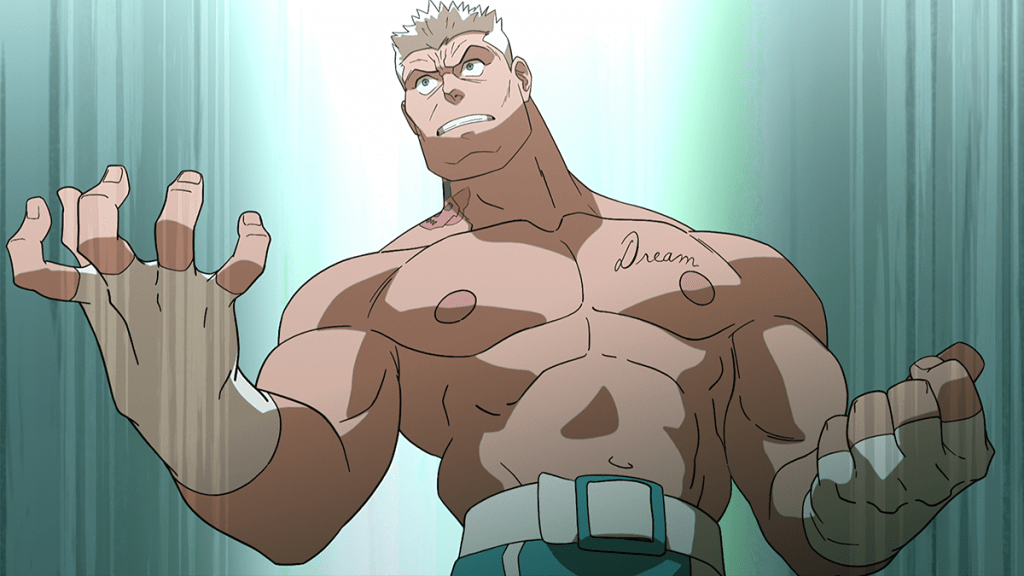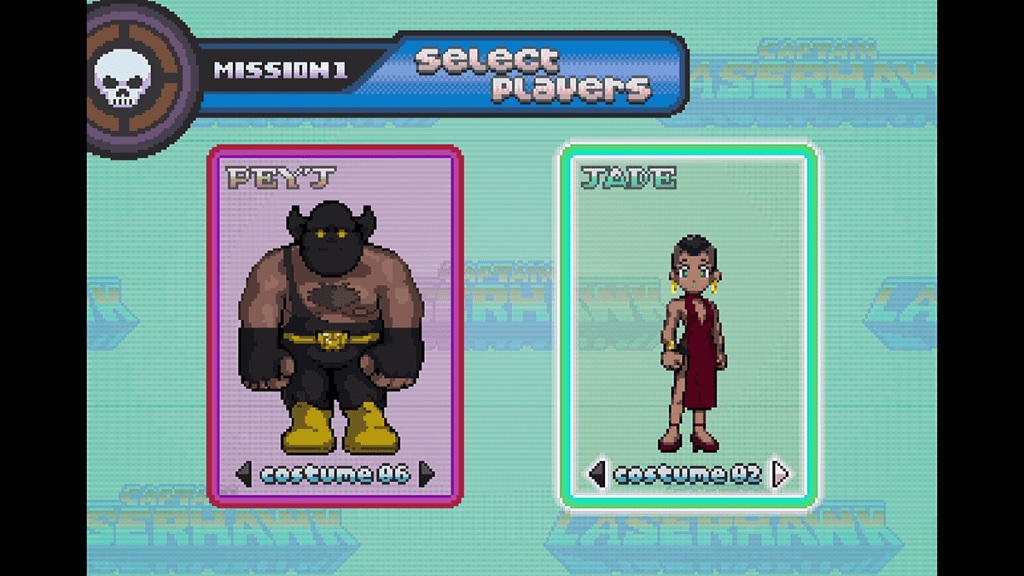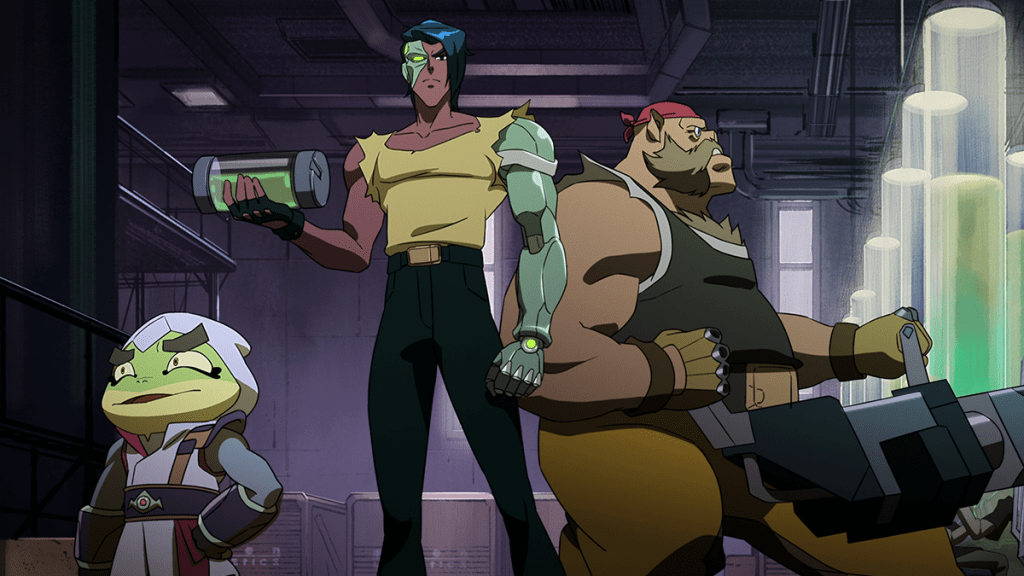ComingSoon Senior Editor Spencer Legacy spoke with Captain Laserhawk: A Blood Dragon Remix creator Adi Shankar about Netflix‘s Ubisoft franchise-oriented animated series. Shankar discussed the process of adapting beloved characters and the show’s unique aesthetic. The series is now available to stream on Netflix.
“The year is 1992. The country formerly known as the USA is now called Eden, a technocracy ruled by propaganda and corruption,” reads the show’s synopsis. “Super-soldier Dolph Laserhawk has just been betrayed by the love of his life, his boyfriend Alex Taylor, and locked up in Eden’s off-the-grid maximum security prison, Supermaxx. Dolph is forced to lead a team of rebel outcasts on risky undercover missions under the order of the prison’s shadowy Warden.”
Spencer Legacy: What was the process of picking which Ubisoft characters and franchises to adapt in Captain Laserhawk: A Blood Dragon Remix like?
Adi Shankar: Great question. So this was all intuitive for me, right? It’s like I was seeing … so this show is a living, breathing universe populated by everything I love, including Ubisoft characters. So it’s almost like I was seeing it and I was feeling it, and then I was transcribing what I was seeing and feeling. Does that make sense? There wasn’t like a logic-driven process where I had a whiteboard and a bar chart or something. Does that that answer your question?
One character in particular who has a really fun role is Rayman — he’s this talk show propagandist. There’s a scene of him where he has cocaine on his nose, and he’s eating sushi off a naked person. Were you worried that Ubisoft might be cautious about portraying him in this really intense world? What was that process like?
So I was already collaborating with Ubisoft — Hugo [Revon], Hélène [Juguet], and the Ubisoift team. We were developing a different project and it was going really, really well. Then, out of the blue, I sent them this pitch and then they were like, “Oh my God, this is great. This is great.” I’m like, “Really? Okay, cool.” [Laughs]. So what you’re referencing was in the original pitch. So we went in with that.
So the broader answer to your question is the existence of this project is owed to the fact that Ubisoft Film & Television fostered an open, friendly, supportive environment where I felt seen and felt super comfortable — comfortable enough to bring them this. I felt safe enough to to bring them this. As a group, they did a magnificent job of protecting the artists and cultivating the artists.
Gérard Guillemot, who’s the head of Ubisoft Film and Television and is one of the brothers who founded the company, literally sat me down at one point — and this was in 2018. We want to make this happen, and we will clear the path for you to make this happen.
It sounds like Captain Laserhawk had a really straightforward and very open procedure, which is probably very creatively fulfilling.
Yeah, I feel like it’s completely creatively fulfilling. I feel like it’s the only way to work really creatively. And that kind of … I don’t want to use the word “freedom,” because it’s not just freedom, it’s also support. The freedom, which mixed with the support and the “yes, and-ing” is what made this project what it is.

It’s not just Ubisoft — there are real people like Cody Rhodes, who has a really funny role in it. How did he end up getting involved in the project?
I just texted him. I was like, “Hey, dude, free to chat?” And then he was like, “Yeah.” And then he was shooting.
I was really happy to see Jade and Pey’j from Beyond Good and Evil in Captain Laserhawk. It’s been a long time. Were they there from the beginning in your process for making it?
Yes. I mean, I saw them in the thing, so it’s not … again — I’m sorry, I’m just harping on the nomenclature here. I saw them in the room, but I literally saw — does that make sense? There’s this alternate reality where automation happened in the 1950s, and I’m seeing this like I got like a window into this parallel universe and I saw them in the room. Yeah. I saw them there. I’m like, “Oh, they’re in the room.” And on some level, I’m like, “Why are both of them in the room?” But I’m like, “Oh, whatever. They’re both in the room. I can’t.” You know?
There’s also some surprising deaths in the series. Was it challenging to really take these beloved characters and be willing to put them on the chopping block when need be?
Emotionally challenging? No. If you look back at Power Rangers — the short film we did — they all just died. In Guardians of Justice, it’s like Superman, boom, he’s gone in the first five minutes. But no, so yes, the answer actually is yes, even though I was saying no, the answer is yes. Because I do feel that. So this feels real, right? So the answer is yes.
My favorite character throughout Captain Laserhawk was Bullfrog. He’s a little, goofy, and cartoony guy, but there’s like a pathos to him. He can be very serious and he’s from this line of assassins. He really walks this line of funny but also very earnest and charming. Were you worried at all with his character design that he might come off as a joke character?
No, I feel like he was … I take Assassin’s Creed very, very seriously. I actually feel like one of the reasons Assassin’s Creed, as a brand, resonates — again, my opinion — so deeply is it is tapping into a fundamental truth about the nature of humanity and the nature of reality, right? The nature of fighting for order and fighting for chaos and the never-ending oscillation between these two seemingly polar opposite visions of civilization, right? But I take that very seriously. He’s a character who takes that very seriously.
So Bullfrog, I always wanted to approach him with psychological realism. Even though he’s cute and cuddly, and you can buy him on the Netflix store — nice plug there. [Laughs]. I knew that this was a exercise in contrast mm-hmm.
And honestly, as I’m peering into this alternate reality, I’m in love with the character, so I’m literally, again, as much as I’m intellectualizing it for you right now, I was seeing the character and, again, transcribing what I’m seeing. It’s like my brain has created this, and my subconscious has created this alternate reality and I’m adapting it.
Like, if you asked me a question about this world, I could close my eyes and answer it. Even things that aren’t in the show. It’s like I’m seeing this whole universe — the word universe is cheesy at this point, because everyone’s like, “I’m launching a cinematic universe.” But you get point. There is a living, breathing, universe, populated with everything that I love that exists and it feels completely real to me.

There are some very fun visual changes in Captain Laserhawk. You have an isometric pixel art section and a romance game section. Were there any specific games that you really took inspiration from for those?
I want to preface this answer by saying that the animation studio, Bobbypills, and the very talented director of every episode, Mehdi Leffad, is the animation studio, they were in charge of the decision-making of how to incorporate this concept into the show. But for me, I wanted this series to be a love letter to gaming. Not just a particular era, and not just a particular game, but the entirety of gaming culture.
That makes sense, especially with how you adapted characters. They aren’t one-to-one who they are in these franchises. Marcus from Watch Dogs 2 is older and a bit different, but the same character in essence.
Totally. So it’s almost like you’re taking the character and defragging the character, then taking the DNA and the essential elements and the emotional truth of the character, and then using that to create a new character that feels like a bizarro, alternate version of the character, you know?
For sure. Finally, can you tell me a bit about the aesthetic you went for?
The genre here is cyberpunk, but this isn’t just cyberpunk. I feel like what we’ve created here or attempted to create here is a new subgenre of cyberpunk, because it’s ’90s cyberpunk. It’s video game cyberpunk. So I’m coining it right now — Gameboypunk.










